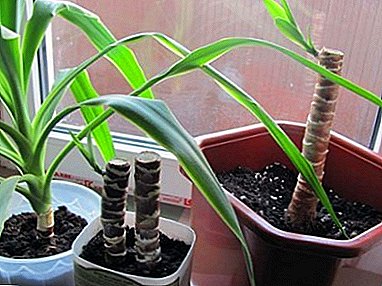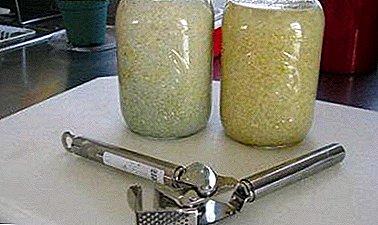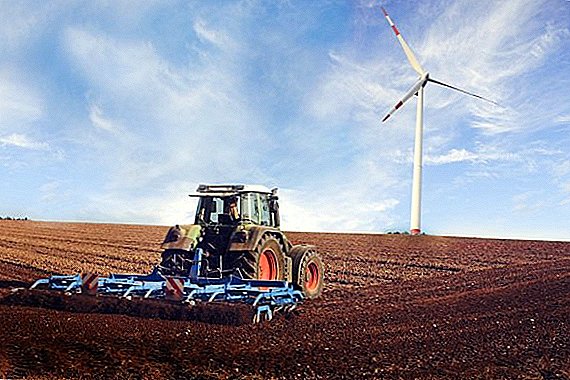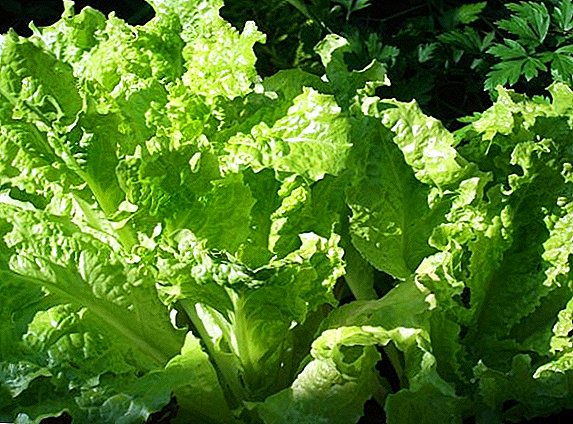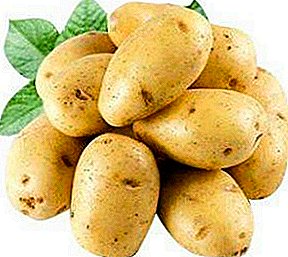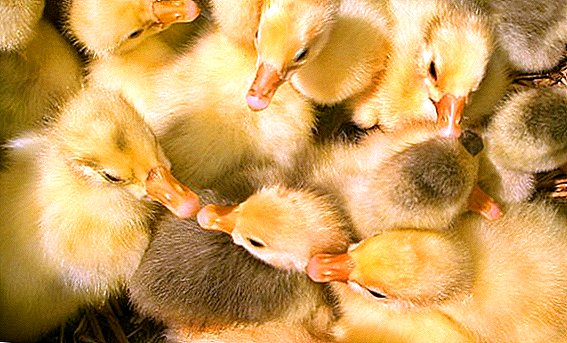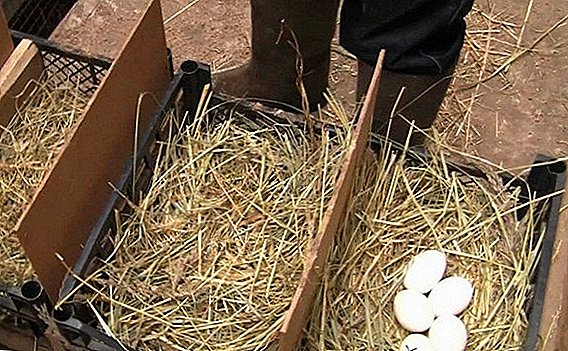 Exotic guinea fowl poultry require much less hassle in keeping than, for example, quail. At the same time, they can bring the breeder up to 80% of profit in one season. Their meat is tastier than chicken and less fatty than that of a duck, their eggs are hypoallergenic, and one bird is able to bring about 100-150 pieces a year. However, all these indicators can be achieved only by creating comfortable conditions for the birds. In the article we will consider one of the nuances of the content of these birds - the requirements for nests and the construction of their own hands.
Exotic guinea fowl poultry require much less hassle in keeping than, for example, quail. At the same time, they can bring the breeder up to 80% of profit in one season. Their meat is tastier than chicken and less fatty than that of a duck, their eggs are hypoallergenic, and one bird is able to bring about 100-150 pieces a year. However, all these indicators can be achieved only by creating comfortable conditions for the birds. In the article we will consider one of the nuances of the content of these birds - the requirements for nests and the construction of their own hands.
Basic nest requirements
As in the case of other domestic birds, certain recommendations on the conditions of detention have been developed for guinea fowls. When creating a favorable climate and providing everything necessary for the bird, it will delight its owner with high egg production and delicious gourmet meat.  It is noticed that guinea fowls rarely rush into the nests, they prefer to choose a secluded place to their liking. This is not very convenient for the owner and the assembly of eggs, so the breeder needs to make a nest in such a way that the bird will like it, then he will get rid of the hassle of looking for eggs all over the house and walking. Guinea fowls rush collectively, therefore nests are equipped for several individuals.
It is noticed that guinea fowls rarely rush into the nests, they prefer to choose a secluded place to their liking. This is not very convenient for the owner and the assembly of eggs, so the breeder needs to make a nest in such a way that the bird will like it, then he will get rid of the hassle of looking for eggs all over the house and walking. Guinea fowls rush collectively, therefore nests are equipped for several individuals.
Important! The guinea fowl is a very shy bird, so much so that when a person appears in the house, it can leave the nest and no longer sit on the eggs. Therefore, if the breeder plans to breed young stock with the help of the hen-hen, he must ensure her complete rest. Usually for breeding chicks resort to the help of an incubator.Guinea fowls will fly to the nests if they:
- are in a dark secluded place, away from the eyes of both people and relatives;
- there is no noise near them that can frighten the bird;
- spacious, with dimensions of at least 40x30x30 cm;
- available in sufficient quantities - one nest is required for 6-8 females;
- reliably protected by walls on all sides and covered from above;
- create a sense of security and safety;
- have a soft, warm, dry bedding made of straw or hay;
- located in a well-ventilated place, but far from drafts.

Making a nest out of the box with your own hands
So, it is desirable that the nest was closed from all sides by the walls - you can leave only a small manhole, so that one hen passes through it. It is in this nest that the female can feel safe and rush without any problems. Such a secluded place can be built from a wooden box, for example, from under vegetables. Before you use it for construction, it must be thoroughly washed, sanitized and dried.
Did you know? The pores in the eggshell can be easily viewed with a conventional loupe. For example, in the shell of a chicken egg, there are about 7.5 thousand. For 21 days, the chicken is inside the egg, about 4 liters of oxygen enter it and about 4 liters of carbon dioxide and 8 liters of water vapor are released.
Necessary materials
To build a nest you will need:
- box made of wood;
- plywood sheets;
- self-tapping screws;
- hacksaw;
- pencil;
- ruler.

Instruction
The procedure for making a nest for a guinea fowl from a box is as follows:
- Fill the walls of the box with plywood sheets.
- Saw a round manhole in one of the walls, into which one bird easily enters. On average, its size can be 17x17 cm, but you need to focus on the breed and height of birds.
- Make a ceiling out of a sheet of plywood.
- Lay the litter on the bottom, it will need to be changed every evening.
Learn more about guinea fowls: breeding at home, incubation and caring for chickens.
If there is no drawer at hand, the nest can be made simply from plywood sheets attached to a frame made of wooden slats. 
Basic rules for the content of guinea fowls
The content of guinea fowls is similar to growing chickens, i.e. involves a minimum of hassle. These birds can contain floor and cellular way. A prerequisite for any method of maintenance is the availability of space for walking.
For guinea fowls, a separate house or a barn is needed at the rate of 1 individual per 1 square meter. Heating in it is desirable, but not necessary, because these are fairly cold-resistant birds. However, the breeder must understand that maximum productivity can be achieved only in warm conditions. The optimum temperature for egg production is + 17 ... +20 degrees. Small chickens are kept at + 32 ... +34 degrees.
Did you know? According to scientists, Africa is the birthplace of hens. However, the first documentary information about these birds belonged to ancient Greece - archaeologists managed to dig up mosaics in the Chersonesos depicting guinea fowls, which belong to the ancient Greek period.In case of floor maintenance, the floor should be covered with bedding of straw, sawdust, and peat. The recommended layer of litter is 10-20 cm.
The house should be equipped with feeders, drinkers, nests and perches. Perches are placed at a height of 60-70 cm from the floor. Once a week, a bath with sand is placed in a hen house or in a cage - in it birds will put their feathers in order, clearing them of dirt. 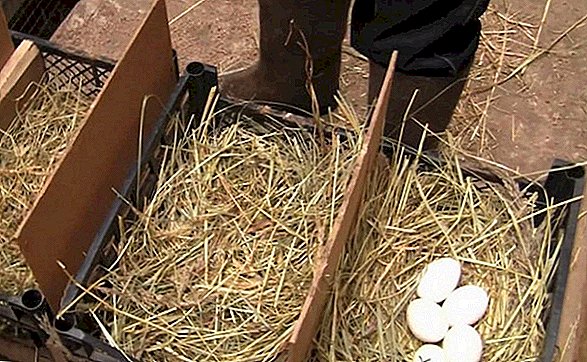 Maximum egg production is possible in good light - in the house should be set the day length at 7-8 hours. Additional light sources should be installed above the feeders and drinkers and away from the nests and resting places of birds.
Maximum egg production is possible in good light - in the house should be set the day length at 7-8 hours. Additional light sources should be installed above the feeders and drinkers and away from the nests and resting places of birds.
Check out the list of wild and domestic guinea fowl breeds.
To maintain an optimal level of humidity and an adequate level of oxygen in the house, it is necessary to equip it with good ventilation. The presence of a ventilation system is important, but not mandatory.
Place for walking should be fenced with a fence not lower than 2 m in height. It should be spacious, because the hen is very fond of the will. In the walking area there should be drinkers and feeders, as well as a shed, under which birds can hide from the sun or rain. Birds can walk all year round, even in the snow.
They feed guinea fowls with cereals, fish oil, animal feed, fresh vegetables, and grass.
Read more about the nutrition and content of guinea fowl.
When the cellular content of the cells should be the size of not less than 1.9 m in length and 0.5 m in width. In this house is placed 5-6 individuals. If there is no possibility of separate keeping, guinea fowls can be shared with chickens - usually these birds peacefully coexist in one poultry house and on one walking platform.  If the guinea fowls still decided to rush in the nest, do not take all the eggs - there is a risk that they will not return to this place. It is necessary to leave a few pieces, otherwise the bird will decide that the nest is ruined and will prefer to rush in another area.
If the guinea fowls still decided to rush in the nest, do not take all the eggs - there is a risk that they will not return to this place. It is necessary to leave a few pieces, otherwise the bird will decide that the nest is ruined and will prefer to rush in another area.
Eggs should be collected at the end of the day, when all the hens have already been torn down (preferably in the dark, so that birds do not see the process of collecting eggs). In order to prevent egg laying in the grass or on the ground, birds should be released on the paddock after dinner, when they have already been torn down in the poultry house.
Important! If you plan to breed guinea fowls for the purpose of selling eggs, then you need to purchase birds of the Zagorsk gray-speckled breed, Siberian white, blue, curly, griffon, turkey. It is these birds that are characterized by the highest egg production.A breeder will be lucky if guinea fowls get used to be carried to the nests. If the birds cannot be accustomed to nests, they will have to observe their behavior - usually in the place where the male is, who is looking around uneasily around and chirping, the female rushes at the moment.
 Thus, the content of guinea fowls at home has a number of advantages: obtaining high-quality and healthy meat, hypoallergenic eggs, containing about 50 amino acids necessary for humans, and having low cholesterol. They are unpretentious, can easily tolerate low temperatures, almost omnivorous. In addition, they can become gardeners of the garden, destroying harmful insects.
Thus, the content of guinea fowls at home has a number of advantages: obtaining high-quality and healthy meat, hypoallergenic eggs, containing about 50 amino acids necessary for humans, and having low cholesterol. They are unpretentious, can easily tolerate low temperatures, almost omnivorous. In addition, they can become gardeners of the garden, destroying harmful insects.

